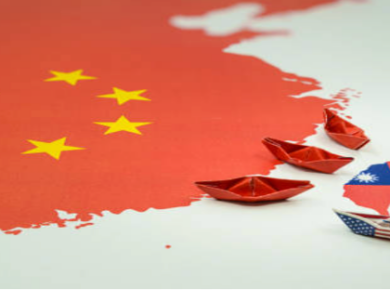Disclaimer: This post reflects solely the opinion of the authors and should not be taken to represent the general views of IPPR’s management/ editorial team or those of fellow authors
The last decade will likely be remembered as a period of democratic decline. Since 2006, there has been no net increase in the number of democracies. At the same time, both established democracies and those in the process of transitioning have faced serious challenges from resurgent authoritarians, populists, and nationalists.
The emerging study of authoritarian innovations provides a promising insight into better understanding democracy’s current malaise. This blog post looks more closely at how authoritarians worldwide have begun using seemingly democratic methods to prop up their regimes. As autocrats watch and learn from pro-democracy forces, democrats themselves have been the architects of some of the more insidious innovations.
What are authoritarian innovations?
Faced with growing pressures, authoritarian actors have moved toward manipulating democracy’s institutions and norms rather than overtly challenging them. As a result, many of the common authoritarian playbook strategies – ‘[s]ilencing the press, jailing the opposition, spreading propaganda, promoting a culture of fear and repression’ – have been modified or even abandoned by a host of politicians and regimes.
Authoritarian innovations can be best understood as ‘practices…that serve to constrain public participation, sabotage accountability, and “disable voice”’. Crucially, they do this by mimicking the presence of democratic accountability and preventing its actual practice at the same time. What makes these innovative is the turn towards bending, not breaking laws; managing institutions rather than controlling them; circumscribing instead of eliminating opponents; and disempowering citizens, not indoctrinating them.
What do they look like in practice?
1. Electoral manipulation
The case of Indonesia helps explain how authoritarian elites’ gradual tightening of electoral participation rules has turned an acceptable instrument of democratic effectiveness (vote thresholds) into a tool to exclude newcomers. Originally, these mechanisms were used to streamline democratic function and prevent cleavages from forming that were too regionally or ethnically homogenous. Now, they are used to restrict the ability of challengers to run for office. These restrictions have come in the form of a slow increase in the presidential nomination threshold from 3% of seats in 2004 to 20% by the 2009 and 2014 elections. As well as a steep increase in the number of regional locations where parties are required to operate.
2. Zombie monitors
By the same token, autocrats are also intent on subverting electoral processes themselves. The use of shadow, or zombie, election monitoring groups as a mock compliance strategy proves useful in signalling your democratic credentials whilst not embodying them. For example, Cambodia employed the services of Romanian diplomat, Anton Caragea during the 2018 election. Caragea has a bizarre record of bestowing awards to dictators, and was able to mobilise seven seperate diplomatic organisations and centres to lend credibility to the election. Unfortunately, Caragea was also found to be the director of every single organisaiton. By dressing up organisations and individuals with limited reputations to look like well-established election monitors, regimes can give sham elections a veneer of legitimacy and rubber stamp the election process.
3. Sham parties
When you can’t fully control the ballot box, it’s sometimes enough to just manage the opposition. In Azerbaijan, Turkey and Rwanda, governments have been particularly innovative, creating or adapting parties to appear as systemic opponents whilst carefully controlling them. By limiting the autonomy that would make such parties actual competitors, autocrats can engage in a kind of performative democracy that secures their own success. This has been most successful in aforementioned Azerbaijan, where oppressive rules have prevented opposition parties from forming distinct ideologies and a concerted attack on opposition credibility has weakened their support among the public. Though technically legal, they remain completely ineffective.
4. Civil society management
Authoritarians also aim to manufacture legitimacy by managing public discourse. The goal is to pay homage to accountability whilst simultaneously evading it. Russia has often used government-operated NGOs, charities, and think-tanks to give the impression of a vibrant civil society that organically supports government policy. The Kremlin has even been accused of creating sham organisations that claim to represent Russian minority groups or advance secessionist causes abroad. In doing so, the regime can subtly demobilise potential opposition groups and prevent them from developing into organic civil society movements/organisations and therefore threats.
5. Image control
Lastly, autocrats can attempt to appear more legitimate through image control. Emboldened by China and Russia’s use of political consultants to represent their interests abroad, many authoritarian regimes now fund think-tanks based in Washington, D.C, as well as pay multinational firms to promote their democratic credentials through lobbying and public relations management. In addition to China and Russia, Malaysia, Saudi Arabia, and Turkey have ‘all employed the fabled services of McKinsey & Company’ to improve their international reputation, signalling that their regimes are more democratically accountable, representative, and liberal than they actually are. Elsewhere, recently leaked emails show how the UAE built relationships with D.C think-tank, the Center for New American Security, with lucrative donations to push international support for their drone agenda.
Even more alarmingly, these same techniques are used in an even more subtle way at home. In Singapore, the ruling People’s Action Party has used seemingly benign digital marketing tools such as hiring ‘social media consultants and influencers to soft-sell public policies’. A far cry from totalitarianism’s usage of blatant propaganda, these innovations draw more from behavioural psychology to ‘nudge’ citizens towards accepting their legitimacy from the comfort of their phones.
Where do we go from here?
Understanding the new ways that authoritarians aim to subvert democracy is not only an important step to solving the problem, but essential for preserving our own fragile stability. The longevity of regimes such as China and Russia, as well as backsliding across countries that were once heralded as exceptional democracies in difficult regions like Turkey, India and Israel, can be better explained by taking into account the legitimising effects of using authoritarian innovations.
Established democracies are also vulnerable to the same innovations, which can be frustratingly difficult to detect given almost any democratic practice may be perverted. In the US, for example, the decline of norms under the Trump administration was made possible by the vaguely defined constitutional restraints that grant broad executive powers as well as a determination to undermine the value of truth in the political realm.By integrating authoritarian innovations into our understanding of this decline we can better explain why such a drop in norms and democratic standards can occur. The regress is no longer associated with military coups or social revolutions, but comes from a sustained and gradual erosion of democracy that leaves its nominally democratic institutions in place. In an era where every element that makes up democratic governance is under threat, even democracies may need to be democratised.
By David Graham,
David is an MSc Democracy and Comparative Politics student at UCL. His research focuses on instruments of deliberative democracy and how mini-publics influence wider scale democratic function.







